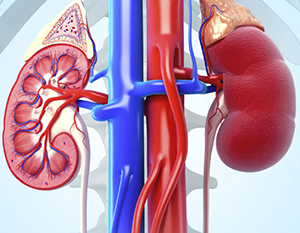New Delhi, Feb 25: In India, almost 200,000 new patients need dialysis every year, and it is estimated that less than 30 per cent of patients manage to receive this life-saving therapy mainly due to non-availability or unaffordability, says a study.
Efforts to provide dialysis to those with end-stage kidney disease should be done in conjunction with more cost-effective efforts while maintaining minimum standards of quality and safety, the paper published in the journal Lancet said.
"As we in India embark on an ambitious national dialysis control program, we must ensure that minimum standards of quality and safety are established for dialysis units and regulations introduced where necessary to ensure standards are maintained," said lead author of the paper Vivekanand Jha, Executive Director of the George Institute for Global Health, a New Delhi-based health research facility.
"Audit systems should be designed to facilitate and encourage documentation of patient care and transparent reporting of costs and outcomes of care to provide an evidence base for decision making and objective evaluation of performance," Jha added.
The paper entitled "Ethical issues in dialysis therapy" argues that health systems should establish programmes of kidney disease prevention and health promotion in conjunction with dialysis and transplantation programmes.
Health professionals and policy makers should strive to reduce the costs of dialysis, using simple, safe and affordable modalities without compromising the quality of therapy provided to the patients, according to the researchers.
"The aim of equitable access to renal replacement therapy and best practice care for all patients with end-stage kidney disease presents major ethical, practical and economic challenges for health-care systems," Jha said.
"These challenges include increasing access to dialysis, helping patients and families to make the best decisions about management of advanced kidney failure and ensure that patients receive affordable high quality chronic dialysis that is based on standards accepted worldwide," Jha explained.
Dialysis access criteria and policy must be informed by an understanding of broader access issues relating to prevention and management of chronic kidney disease, supportive care, management of co-morbidities and complications, and general health-care services, the paper said.
"Physicians have an obligation to provide information about risk and benefits of dialysis and to support patients or their surrogate decision makers in qualitative evaluation of treatment options," co-authors of the paper Dominique Martin of Deakin University in Victoria, Australia, said.
According to a systematic review of worldwide access to treatment for end-stage kidney disease published in the Lancet in 2015, an estimated 2.28 million patients died in 2010 because of non-availability or unaffordability of dialysis, most of them in low-income and lower-middle income countries.





Comments
Add new comment